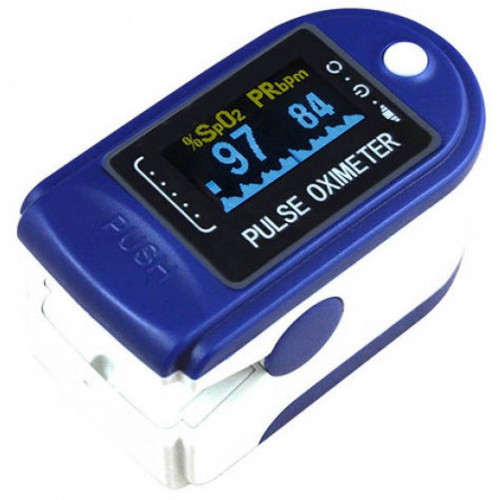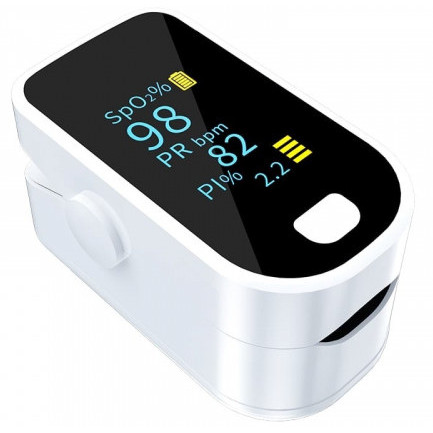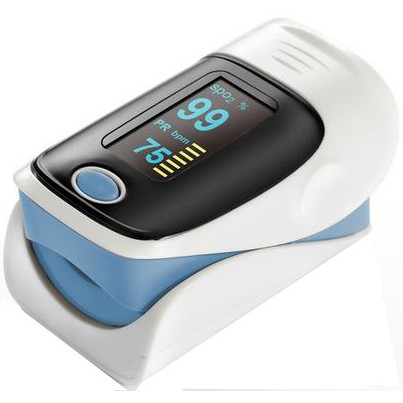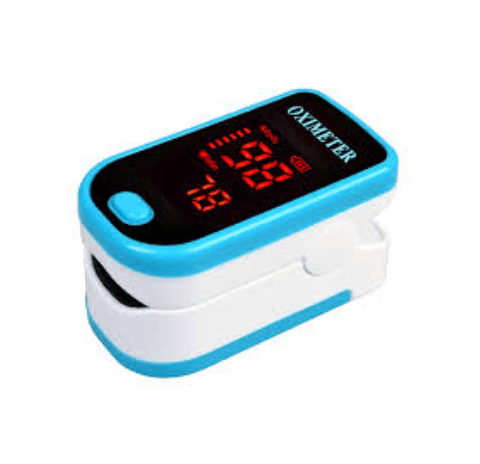Pulse Oximeter Price in Bangladesh
Pulse Oximeters in Bangladesh: Everything You Need to Know While Buying.
What is pulse oximetry?
The pulse oximeter is one of the key medical machinery that aids in the measurement of heartbeats and oxygen levels in the blood. This compact and user-friendly device permits fittings on the tip of a finger to generate vital readings necessary for health checks. Notably, pulse oximeters have become crucial during the COVID-19 pandemic for identification with low oxygen levels; if not checked, it may cause severe organ damage.
Pulse Oximeter Price in Bangladesh
The cost of a pulse oximeter is different based on the brand, quality of the display, accuracy in the sensor, and technology in Bangladesh. Basic ones are available at around TK 1000-15000. Ratings for pulse measurement ranges from 30 bpm to 250 bpm. Those at a higher price have advanced features and thus give more accurate measurement readings from a rating of 30-99 bpm.
Basic Models:
These are the entry-level pulse oximeters whose price starts at approximately TK 750. They do have essential features in them, such as pulse rate and oxygen saturation measurement. They are suitable for general use and work with reliable readings for the majority of people.
The models that come in the middle range are priced from Tk 1,000 to Tk 2,000. This midpoint model would have major distinguishing features, including an enhanced display screen, high accuracy of the sensor, ultra-low oxygen level alarms, and rechargeable batteries.
Advanced models:
For the Pulse Oximeters above TK 2,000, advanced technology for precision measurements is endowed. They often come handed with advanced features, which include multidirectional display, Bluetooth connectivity to track data, and pediatric probes in case of children.
Pulse Oximeter Structure
Most pulse oximeters are fabricated from good quality plastic. They contain a sensor and a photo diode on the LED detector. The device captures light, through which it processes and shows it on the screen digitally. Some of the main instructions to be displayed are as follows:
- Display of Low Voltage: It means the level of the battery, a very important thing for its rechargeable types.
- Structure of Oxygen, SpO2: This is the small sign on the left-hand side showing the concentration of oxygen.
- Oxygen Level: This is displayed in front and shows the percentage of oxygen in the blood.
- Pulse Rate Symbol: Small signals are given which show the oxygen level and change every second.
- Pulse Rate: These are large numbers that indicate heart rate per second.
- Pulse Rate Bargraph: These symbols will float up and down as the pulse rate goes up or down and are located on the left side.
Importance of Pulse Oximeters
Pulse oximeters are much more than a regular health reading device, mostly seen in medical facilities such as hospitals, clinics, and even home care for patients with chronic respiratory pathologies like asthma, chronic obstructive pulmonary disease, and bronchitis. In that respect, pulse oximeters played a very crucial role in the COVID-19 pandemic by detecting silent hypoxia, where the oxygen saturation in a patient's body goes very critically low without being noticed.
Such regular monitoring may facilitate timely medical intervention and hence prevent severe complications, thus attaining good outcomes for patients. Among people who already have life challenges like heart disease, diabetes, and blood pressure, a pulse oximeter at home brings peace of mind and gives them the ability to monitor their health before things get worse.
Structure and Components of a Pulse Oximeter
- Body: This is usually made of high—grade plastic and forms the outer covering for the device's inner components. It provides strength to the device while making it portable.
- Sensor: This is usually mounted on one end of the device. It generates light waves that will go through your fingerprint. This is a very critical component of the measurement to be done.
- Photo Diode: This shall be mounted opposite the sensor component. It detects light waves that pass through the blood and converts this into a digital signal.
- LED Display: It shall display readings of oxygen saturation, pulse rate, and related information.High-end models also have multi-directional displays for easy reading from any angle.
- Battery: Pulse oximeters run on batteries, that may be disposable or rechargeable. The low voltage display indicates battery replacement or recharge.
- Pulse Rate Bargraph: This is available in some models, and the bargraph flashes with each pulse, thus indicating its fluctuations.
How to Use a Pulse Oximeter
- First, set up the device by making sure your pulse oximeter is clean and the amount of life left in the batteries is enough. If it's rechargeable, make sure that it is fully charged.
- Choice of Finger: It is normally suggested that either the thumb or the middle finger of the dominant hand be used to obtain an accurate reading. None of the fingers should be with nail polish or artificial nails, and the one to be used is to be clean and dry without any polish or artificiality that may hamper the accuracy in the reading.
- Positioning of the Finger: Place the chosen finger in the pulse oximeter whereby the finger is appropriately aligned between the sensor and the photo diode. It should fits snugly but not too tight.
- Turn On: Switch on the pulse oximeter by pressing the power button. Upon start up, it takes a measurement immediately.
- Stay Still: The finger shall be still and the patient shall as such throughout during a measurement. Movements may cause incorrect readings.
- Read the Results: The meter reading will be a bit fluttery for a few seconds until it settles. You should find the oxygen saturation level given as SpO2 and the pulse rate; other values may include the Perfexion Index and Pulse Rate Bargraph, depending on the model.
- Interpret Results: The normal oxygen saturation ranges between 95% and 98%. If below 90%, there is hypoxia; the patient needs immediate admission to the hospital. The pulse rate usually stays within the range of 60 through 100 beats per minute for adults, while for some people, a normal individual range might vary.
- Turn the Device Off: Switch off the pulse oximeter once the readings are taken; this will avoid loss of battery power.
Factors Affecting Pulse Oximeter Readings
- Hand Temperature: Cold hands may result in incorrect readings. Allow the hand to reach room temperature before taking a measurement.
- Movement: Too much movement while being measured will give erratic readings. Keep the hand firm.
- Nail Polish and Artificial Nails: These will interfere with the light transmission to the nail bed and affect accuracy. Remove any nail polish or artificial fingernails before use.
- Poor Circulation: Peripheral artery disease and other circulatory problems may change the blood flow. This again leads to inaccurate reading. In these kinds of situations, the user should obtain a medical professional's advice.
- Skin Pigmentation: Pulse oximeters might not be that accurate on darker skin tones. Go for models with variability across skin tones.
- External Light: The device can be interfered with due to strong external light sources. It has to be used in a surrounding with good lighting, but not too bright.
Maintenance and Care of Pulse Oximeters
- Cleaning: Wipe the pulse oximeter regularly with a soft cloth and a mild disinfectant. Harsh chemicals that can damage the device must be avoided.
- Storage: Keep the device away from direct sunlight and extreme temperatures in a cool, dry place.
- Care of Batteries: Replace disposable batteries as required and recharge rechargeable models frequently. Avoid overcharging to increase battery life.
- Calibration: Some designs may require calibration after periods to maintain their accuracy. Do calibration following the instructions available from the manufacturer.
- Handling: The device should be handled with care always to avoid damage to the sensor and other main components; avoid dropping and hitting with excess force.
Who Should Use a Pulse Oximeter?
- This becomes particularly useful in the monitoring of oxygen levels in patients with various respiratory conditions, such as asthma, COPD, bronchitis, and others.
- Patients with Heart Disease: Patients who have been diagnosed with coronary heart disease, heart failure, and others monitor their heart rate and saturation using pulse oximeters.
- Patients Who Have Diabetes/Blood Pressure: Chronic conditions such as diabetes and blood pressure have risk factors associated with them, giving rise to complications that may influence oxygen levels; therefore, the pulse oximeter becomes quite essential in such cases.
- Patients Suffering from COVID-19: Home monitoring of oxygen saturation facilitates the early detection of silent hypoxia and its complications related to COVID-19, hence allowing timely medical intervention.
- Athletes: Pulse oximeters are applied in tracking oxygen levels to optimize performance, especially for endurance athletes and those involved in high-altitude training.
Common Misconceptions and Errors
- Assuming Absolute Accuracy: Although pulse oximeters are reliable, they are not absolutely so. There may be % variations of up to 2% that are considered normal, and results must be interpreted in the context.
- Ignorant of Symptoms: Not everything is on pulse oximeter readings. Serious symptoms such as shortness of breath, chest pains, and dizziness should never be ignored and would always call for a house visit by your doctor.
- Wrong Finger Selection: An inaccurate reading can be caused due to using the wrong or even a wrongly positioned finger. Follow guides on the selection and placement of the finger.
- With Nail Polish: Nail polish and artificial nails interfere with the readings. Make sure the finger is clean and obstruction-free.
- Ignorance towards Maintenance: dtype an appropriate maintenance will result in the accuracy and longevity of the device. Keep a regular cleaning schedule and care for the batteries.
- General Health Monitoring: Pulse oximeters are mainly used to monitor general health and wellness, particularly when one is feeling ill or after exercise.
Best Pulse Oximeters in Bangladesh (2025)
- Basic Pulse Oximeter: This one goes for about TK 750 and produces readings good enough to cover general usage requirements. It will come with an LED front panel that clearly displays readings, among other functions for checking pulse rate and oxygen level.
- Mid-Range Pulse Oximeter: The cost for this lies between TK 1,000 to TK 2,000. Some added facilities in this range include low oxygen level alarms, better sensor accuracy, and more improved rechargeable batteries.
- Advanced pulse oximeter: Starts from TK 2,000, in this advanced model, comes with the latest technology for perfect measurement. Multi-directional display, Bluetooth connectivity, and pediatric probes for children as additional features.





